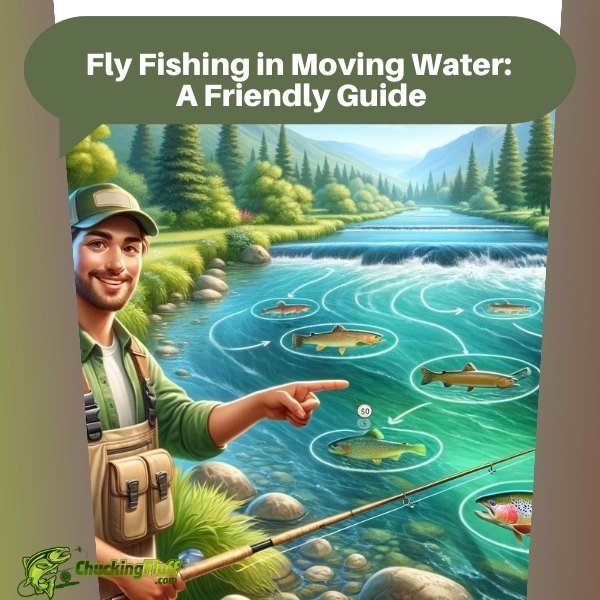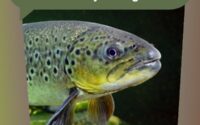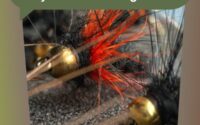| Disclosure: Just to be open and honest the buttons and links you click on in the website will in most cases take you to another website where you can purchase the products I am reviewing. As an Amazon Associate I earn from qualifying purchases. |
Fly Fishing in Moving Water: A Friendly Guide
Quick Post Navigation

Introduction
Hey there! If you’re into fishing or just curious about how to catch trout in rivers and streams, you’re in the right place. Fishing in moving water can be super fun and rewarding, but it comes with its own set of challenges. Let’s dive into the world of fly fishing and discover how to find and catch trout in moving water.
The Basics of Fishing in Moving Water
Fishing in moving water, like rivers and streams, is different from fishing in still water, such as lakes or ponds. The current in moving water helps bring your bait to the fish but also creates unique challenges. Let’s break it down.
Understanding Water Dynamics
Water dynamics refer to how the water moves in a river or stream. Knowing this helps you understand where the fish might be and how to present your bait naturally.
Types of Casts
- Upstream Cast: Casting directly into the current. This makes your bait drift naturally but can scare fish since the line might be over them.
- Quartering Upstream: Casting at an angle between upstream and across the current. It helps in keeping the line off the fish while still having a natural drift.
- Across Stream: Casting at a 90-degree angle to the current. This can cause the bait to drag unnaturally, which isn’t ideal for some types of bait.
- Quartering Downstream: Casting at an angle downstream. Good for swinging the bait across the current, especially for larger fish like salmon.
- Downstream: Casting directly downstream. This isn’t used often because it causes the bait to drag right away.
Techniques to Avoid Drag
Drag is when your bait moves unnaturally because of the current. Fish can be easily spooked by drag, so here are some techniques to avoid it:
Mending
Mending involves lifting the line and repositioning it to reduce drag. It’s easier than it sounds! Just lift your rod tip and flip the line upstream. This allows your bait to drift more naturally with the current.
Reach Cast
This cast helps to place the line properly in the water. You cast with a high trajectory and then let the line land in loose coils, reducing drag. This technique is great when fishing across conflicting currents.
Parachute Cast
Also known as the pile cast, this involves casting with a high forward trajectory and then letting the line fall loosely on the water. This helps the bait drift naturally without being pulled by the current.
Tips for Fishing in Different Currents
Different parts of a river or stream have different currents, and knowing how to fish in each can improve your chances of catching trout.
- Fast Water: Keep your rod high to avoid the conflicting currents pulling your line. In fast water, the current can quickly drag your bait, so keeping your line off the water helps maintain control.
- Slow Water: Use longer tippets (the thin line at the end) to reduce drag. Slow water might require more subtle presentations, and a longer tippet helps the bait drift naturally.
Advanced Casting Techniques
To master trout fishing in moving water, it’s essential to learn a few advanced casting techniques that can help you present your bait more effectively.
Slack Line Cast
A slack line cast introduces slack into your line, allowing the bait to drift naturally without being pulled by the current. There are several types of slack line casts, including:
- S-Cast: By wiggling the rod tip as you cast, you create S-shaped curves in the line, adding slack.
- Parachute Cast: As mentioned earlier, this involves casting with a high forward trajectory and letting the line fall in loose coils.
Reach Cast
The reach cast helps place the line in a way that reduces drag. After your forward cast, reach the rod upstream to place the line more naturally in the current.
Safety Tips for Wading
Wading in rivers can be tricky and potentially dangerous. Here are some safety tips:
- Angle Upstream: When crossing, angle yourself upstream to avoid being pushed into deeper water.
- Use a Wading Staff: A sturdy stick or wading staff helps you keep balance.
- Wear a Wader Belt: This keeps water out of your waders if you fall, adding buoyancy.
Summary
Here’s a quick summary of what we’ve covered:
- Types of Casts:
- Upstream Cast: Natural drift, but can scare fish.
- Quartering Upstream: Good for a natural drift with less risk of scaring fish.
- Across Stream: Can cause drag, not ideal for dry flies or nymphs.
- Quartering Downstream: Great for swinging flies for larger fish.
- Downstream: Not commonly used due to immediate drag.
- Techniques to Avoid Drag:
- Mending: Repositioning the line to reduce drag.
- Reach Cast: Casting with a high trajectory to reduce drag.
- Parachute Cast: Letting the line fall loosely to reduce drag.
- Tips for Different Currents:
- Fast Water: Keep your rod high.
- Slow Water: Use longer tippets.
- Safety Tips for Wading:
- Angle upstream, use a wading staff, and wear a wader belt.
Conclusion
Fishing in moving water is exciting and a bit challenging, but with these tips, you’ll be well on your way to catching trout like a pro. Remember, practice makes perfect, so get out there and have fun!
FAQs
Q: What is drag in fly fishing?
A: Drag is when the current pulls your bait unnaturally, making it look suspicious to fish.
Q: Why is mending important?
A: Mending helps to reduce drag, making your bait look more natural.
Q: What’s the best cast for beginners?
A: Quartering upstream is a good starting point because it balances a natural drift with keeping the line off the fish.
Q: How can I stay safe while wading?
A: Always angle yourself upstream when crossing, use a wading staff, and wear a wader belt to stay buoyant if you fall.
Now that you’re armed with knowledge, go out and enjoy the thrill of fishing in moving water. Happy fishing!


